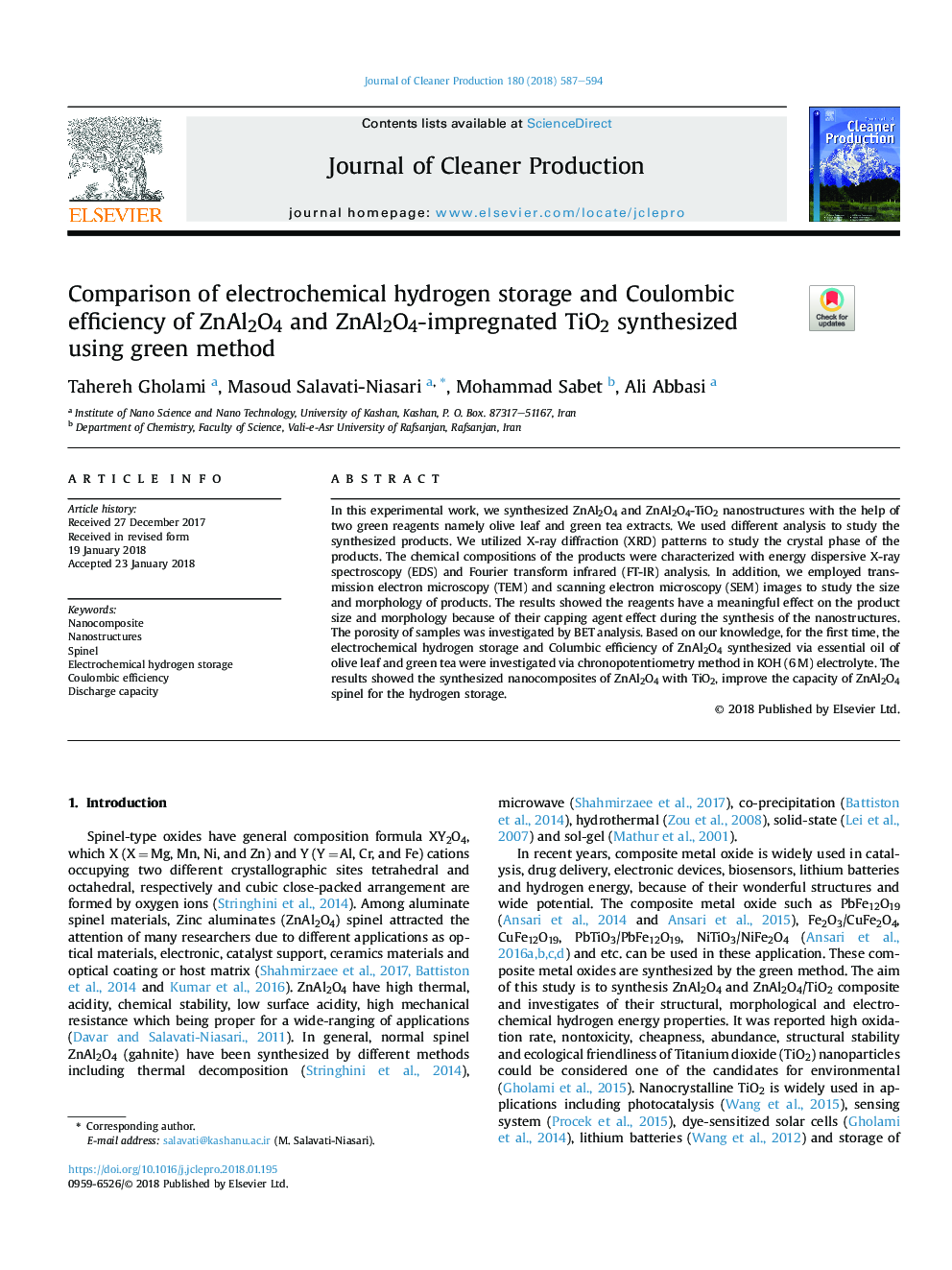| Article ID | Journal | Published Year | Pages | File Type |
|---|---|---|---|---|
| 8098029 | Journal of Cleaner Production | 2018 | 8 Pages |
Abstract
In this experimental work, we synthesized ZnAl2O4 and ZnAl2O4-TiO2 nanostructures with the help of two green reagents namely olive leaf and green tea extracts. We used different analysis to study the synthesized products. We utilized X-ray diffraction (XRD) patterns to study the crystal phase of the products. The chemical compositions of the products were characterized with energy dispersive X-ray spectroscopy (EDS) and Fourier transform infrared (FT-IR) analysis. In addition, we employed transmission electron microscopy (TEM) and scanning electron microscopy (SEM) images to study the size and morphology of products. The results showed the reagents have a meaningful effect on the product size and morphology because of their capping agent effect during the synthesis of the nanostructures. The porosity of samples was investigated by BET analysis. Based on our knowledge, for the first time, the electrochemical hydrogen storage and Columbic efficiency of ZnAl2O4 synthesized via essential oil of olive leaf and green tea were investigated via chronopotentiometry method in KOH (6â¯M) electrolyte. The results showed the synthesized nanocomposites of ZnAl2O4 with TiO2, improve the capacity of ZnAl2O4 spinel for the hydrogen storage.
Keywords
Related Topics
Physical Sciences and Engineering
Energy
Renewable Energy, Sustainability and the Environment
Authors
Tahereh Gholami, Masoud Salavati-Niasari, Mohammad Sabet, Ali Abbasi,
